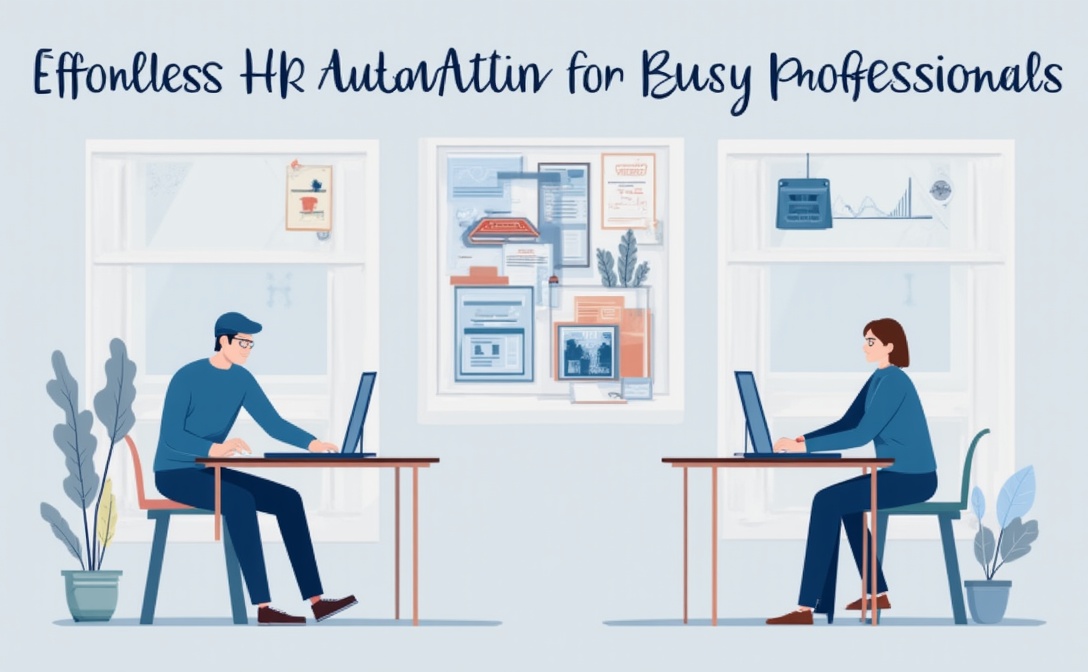A Beginner’s Guide to Houseplants: Low-Maintenance Options for Busy People
Estimated reading time: 8 minutes
Key Takeaways
- Low-maintenance houseplants are ideal for busy schedules, requiring minimal watering and care.
- Popular options include Snake Plant, ZZ Plant, Pothos, Peace Lily, and Aloe Vera.
- Understanding basic needs like lighting, watering, and soil drainage is essential for plant health.
- Automating plant care using IoT sensors and smart watering systems can save time and prevent neglect.
- The principles of simple automation apply both to indoor gardening and workplace workflows.
Table of Contents
- A Beginner’s Guide to Houseplants: Low-Maintenance Options for Busy People
- Why Choose Low-Maintenance Houseplants?
- Top Low-Maintenance Houseplants for Busy People
- Basic Needs of Low-Maintenance Houseplants
- Automating Plant Care for Busy People Using Workflow Automation
- Practical Takeaways for Recruiters and HR Professionals
- How Our Company Can Help
- Get Started Today
- Conclusion
- FAQ
Why Choose Low-Maintenance Houseplants?
Houseplants are more than just decorative elements; they can promote healthier indoor environments and support mental health. According to research, plants can reduce stress levels, increase productivity, and improve indoor air quality by filtering out pollutants like formaldehyde and benzene (source: NASA’s Clean Air Study). However, care requirements vary widely among plants. For those with limited time or experience, choosing hardy, low-maintenance options is essential.
These plants typically require minimal watering, thrive in low light, and are resilient against common mistakes such as overwatering or neglect. They are perfect for busy people who want to enjoy the benefits of indoor greenery without dedicating hours each week.
Top Low-Maintenance Houseplants for Busy People
Let’s explore some of the most popular easy-care houseplants that are well-suited for even the busiest plant enthusiasts:
1. Snake Plant (Sansevieria)
- Care Needs: Tolerant of low light, drought-resistant, prefer infrequent watering
- Why It’s Great: Often dubbed the “set it and forget it” plant, the snake plant can survive in various lighting conditions and only needs watering once every 2-3 weeks. It also helps purify indoor air.
2. ZZ Plant (Zamioculcas zamiifolia)
- Care Needs: Low light tolerant, infrequent watering, drought-resistant
- Why It’s Great: Its glossy, dark green leaves create a striking appearance, and it can go weeks without water. It thrives in low-light environments and is highly resilient.
3. Pothos (Epipremnum aureum)
- Care Needs: Low to moderate light, drought-tolerant, prefers indirect sunlight
- Why It’s Great: Perfect for hanging baskets or shelves, pothos can survive in a range of lighting conditions and only needs watering when the top inch of soil feels dry.
4. Peace Lily (Spathiphyllum)
- Care Needs: Low to medium light, moderate watering
- Why It’s Great: Besides its elegant white blooms, the peace lily can handle lower light levels and signals when it needs water through its wilted leaves, making it easier to maintain.
5. Aloe Vera
- Care Needs: Bright, indirect sunlight; infrequent watering
- Why It’s Great: Not only is aloe vera easy to care for, but it also offers medicinal properties for skin and minor burns. It prefers soaking in bright light and some neglect.
Basic Needs of Low-Maintenance Houseplants
Understanding the simple requirements of your plants is key to successful indoor gardening. Here are some essential care tips:
Lighting
Most easy-care plants tolerate low or indirect light. Placing them near north-facing windows or in shaded areas is ideal. If natural light is limited, consider using grow lights to supplement.
Watering
Overwatering is a common mistake. Many low-maintenance plants prefer drying out completely between waterings. Verify each plant’s specific needs, but generally, watering once every 2-3 weeks is sufficient.
Soil and Drainage
Use well-draining soil and pots with drainage holes to prevent water accumulation at the bottom, reducing the risk of root rot.
Temperature and Humidity
Most houseplants thrive between 65°F and 75°F. Avoid cold drafts and sudden temperature changes. Humidity isn’t a major concern for these hardy plants but avoid placing them near heating vents.
Feeding
Fertilize sparingly—typically once a month during the growing season with a diluted houseplant fertilizer.
Automating Plant Care for Busy People Using Workflow Automation
Just as AI consulting companies leverage tools like n8n to streamline complex workflows, busy plant lovers can automate aspects of plant maintenance. IoT sensors can monitor soil moisture and environmental conditions, sending alerts directly to your phone or scheduling automatic watering with smart watering systems. These automated solutions save time and reduce the risk of neglect.
For example, integrating low-cost sensors with automation platforms such as n8n allows you to create workflows that trigger notifications when soil moisture drops below a threshold, prompting you to water your plants. Similarly, smart planters equipped with self-watering features can be connected to an automation system to ensure your plants receive the right amount of water, even when you’re away.
Practical Takeaways for Recruiters and HR Professionals
While this guide focuses on houseplants, the principles of low-maintenance are equally applicable to workflow automation in the workplace. Just as choosing hardy plants simplifies indoor gardening, selecting the right automation tools and workflows can streamline recruitment processes, onboarding, and employee engagement.
- Identify and implement simple automation workflows using platforms like n8n to reduce manual tasks.
- Leverage IoT and sensor technology for real-time monitoring and alerts in HR systems.
- Prioritize user-friendly, low-touch solutions that save time and improve operational efficiency.
How Our Company Can Help
Just as selecting the right houseplants and automation solutions simplifies home gardening, our company specializes in AI consulting and workflow automation tailored to your business needs. We help organizations harness the power of AI and automation to optimize processes, reduce manual effort, and create smarter workflows.
Whether interested in automation tools like n8n or developing custom AI solutions, our team provides tailored consulting, seamless integration, and ongoing support to ensure your success in automation adoption.
Get Started Today
Embarking on your journey toward a more automated and efficient workspace or home environment doesn’t have to be complicated. With the right low-maintenance houseplants and smart automation strategies, you can enjoy lush greenery and enhanced productivity without the stress.
Interested in learning more about how automation can transform your HR processes or business operations? Contact us today or explore our services to discover how our expertise in AI consulting and workflow automation can help you achieve your goals.
Conclusion
Creating a thriving indoor garden or a streamlined workflow may seem challenging at first, but with the right approach, it becomes an enjoyable and rewarding experience. Low-maintenance houseplants offer a simple solution for busy individuals to enjoy the benefits of nature indoors, while automation tools can help maintain that greenery effortlessly. As technology and automation continue to evolve, so too do opportunities to simplify our lives—be it through thriving houseplants or smarter business processes.
Let us help you take the next step in automation and workflow optimization. Reach out today to learn more about our services and how we can support your success.
*Note: For further insights into smart automation solutions or to explore tailored AI strategies, visit our website or contact our team.*
**Take action now—whether cultivating beautiful, low-maintenance houseplants or automating your workflows, we’re here to help you thrive.**
FAQ
Q: How often should I water low-maintenance houseplants?
Most low-maintenance houseplants require watering once every 2-3 weeks. Always verify specific needs, but allowing the soil to dry out completely between watering sessions is generally recommended.
Q: Can automation truly reduce the need for manual plant care?
Yes, automation tools like smart sensors and self-watering planters can monitor soil moisture and environmental factors, automatically triggering watering or alerting you when action is needed, thus significantly reducing manual effort.
Q: Are low-light houseplants suitable for offices with limited sunlight?
Absolutely. Plants like Snake Plant, ZZ Plant, and Peace Lily thrive in low-light conditions, making them excellent choices for office environments with limited natural sunlight.
Q: How can I get started with automating plant care at home or work?
Begin by selecting suitable smart sensors and self-watering planters, then connect them to automation platforms like n8n. Setting up workflows that monitor soil moisture and send alerts or automatically water your plants is an effective first step.






